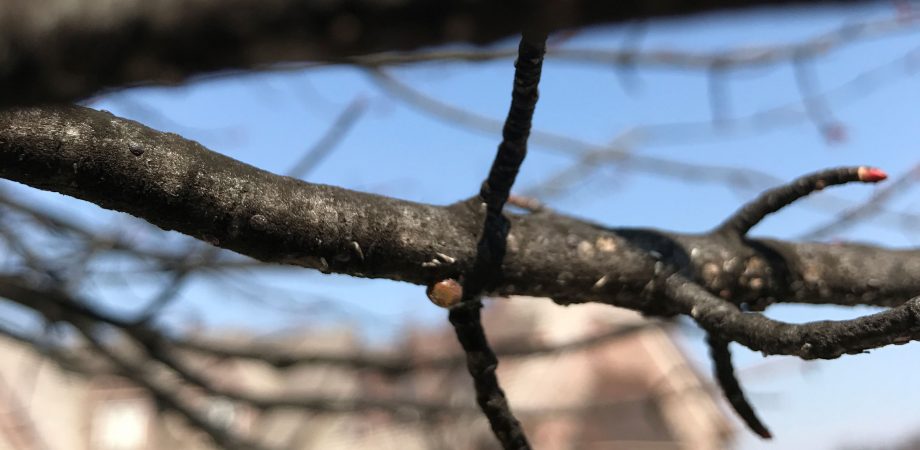Soft Scale And Other Insects You Should Be Looking Out For

Soft Scale
Because we had a significant warm up in the winter, there is a possibility that soft scale crawlers are already active and feeding. While you might think that the warm temperatures followed by the colder temperatures of the previous weeks could harm them, I’m sure it didn’t. Insects have been surviving for centuries through all types of weather.
Soft scale crawler infestation problem symptoms
- Sticky or shiny foliage. Crawlers feed on plant sap found within the phloem tissue of plants. After feeding on the sap, crawlers excrete a sticky, sugary substance called honeydew. The honeydew coats foliage and branches, but can also coat other things like signs and driveways. It is shiny and sticky.
- Other insect attraction. The sugary honeydew can attract other insects, like ants, wasps, and bees.
- Sooty mold. Sooty mold grows on the honeydew of crawlers, turning items coated with honeydew a black color.
Can a true dormant oil application still be made against scale crawlers now? Yes, it can; some control of the crawlers can be obtained. If it were me, I’d wait and do a dormant oil fungicide combo when leaves start emerging.
Disclaimer: Do not put dormant oil on maples and blue spruces. The leaves on some maples are very sensitive to dormant oils. If you accidentally put dormant oil on the leaves, you would most likely scorch the leaves and cause them to fall off. Brandt’s Tritek® oil is safer on most maples; however, make sure to follow reduced rates according to the label. Oils will also strip the waxy coating on blue spruces and Blue Rug junipers. The wax is what gives them a blue color.
A serious soft scale infestation will require a systemic insecticide application this spring. So, you could either use Safari® or imidacloprid, depending on your timing. If you can get out early in the spring, go with imidacloprid. It takes longer to get up trees, but it will give you decent control on soft scale. When doing an application with Safari, use a trunk spray. Safari will go up the tree much quicker.
The systemic applications will really knock down the crawler population. However, you may not get full control depending on how bad the infestation is. I’ve come across instances where it has taken a few years of applications before a crawler infestation has completely ended. Why can it take a long time to get rid of an infestation? The crawlers, as they hatch, will shed their skin, and you can get shed skins stacked on top of each other. This can keep the chemicals, especially foliar apps, from penetrating to live crawlers. The systemic might give you 95% control; however, the small percentage that escapes can produce up to 1000 eggs.
Leaf Miners
There are several types of leaf miners. They include flies, beetles, and wasps. They will start showing up in early spring. The female pierces a leaf with her ovipositor and lays eggs inside the leaf. The hatching larvae feed on the leaf material between the upper and lower epidermis.
Major Symptom:
Tunnels or large blotches in leaves.
Because leaf miner larvae are found inside the plant, foliar applications are not effective. Application timing for adults have to be aimed at the specific species. These can be very hard to time. Most will have a short flight window. If you have Hawthorns with leaf miners, use Safari as soon as you can get out for an application. I had excellent results with fall applications of imidacloprid.
Aphids
Aphids do not normally cause a lot of damage, but heavy populations can. Aphids, like soft scale, feed in the phloem and can produce honeydew. Symptoms on the plant include distortion of growth and sooty mold. On winged euonymus, they can feed on young stems and leaves. The stems will twist and the leaves may not look fully elongated.
Boxwood Psyllids
Boxwood psyllids cause problems as the new buds on boxwoods come out. They feed in the tips of the buds, making the top leaves look cupped. A dormant oil application will work wonders on a boxwood with a psyllid infestation.
Nikki Hendrickson
ATS Sales Rep







